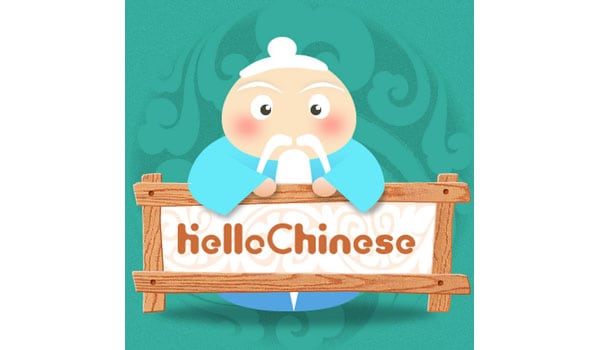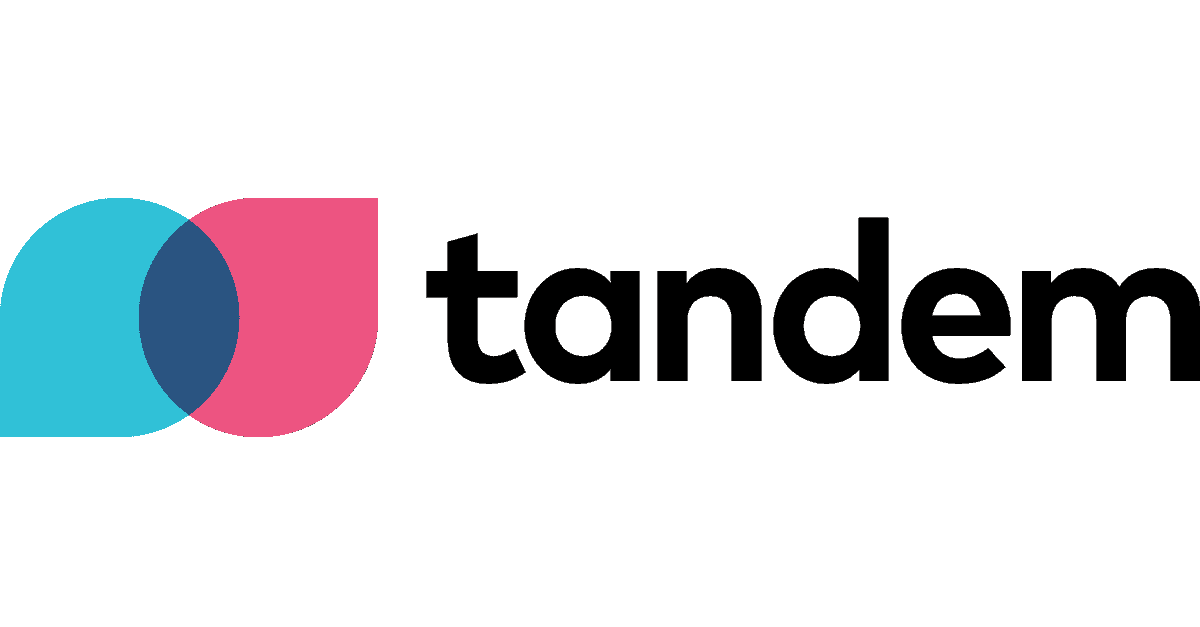In order for you speak with confidence, understand hanzi characters and pinyin, and perhaps most importantly of all, enjoy learning Chinese, you need to find the right Mandarin course.
However, not all Mandarin Chinese courses are the same. A lot of them focus on acquisition and improvement of different skills. Some work best for beginners, others for intermediate students. Others are well-suited to the HSK exams, while others are good at everyday Chinese slang.
As much as there are so many great resources to learn Chinese, there are some that just aren’t that great. After all, there are tons of Chinese courses out there (we’ve reviewed hundreds of Mandarin resources).
A poor course won’t just waste your time and money, it’ll leave you lost, demotivated, frustrated, and potentially learning incorrect Mandarin.
We’ve rounded up our top picks for learning Mandarin Chinese online. Each one of these courses has a rating of at least 3.5 out of 5 stars. This means that they’re above average on our site. Moreover, they all have something that sets them apart. Whether you’re looking for beginner lessons, hanzi, in-depth explanations or a less intimidating introduction to the Chinese, we think you’ll find it on this list. For other methods on how best to learn Chinese, read our tips here.
Table of Contents
Table of Best Courses to Learn Mandarin Chinese
Links below will send you to the course websites, and the course details are down below.
OVERALL BEST
Excellent Conversational Video Courses: Yoyo Chinese
Best Live & Interactive Complete Chinese Courses: GoEast Mandarin
Thorough Pre-HSK1 Through to HSK3 Courses that Will Give You a Strong Foundation for Long-Term Learning: Chinese For Us
Supplementary Resource That’s Particularly Useful for the HSK Exams: Chinese Zero to Hero!
Hacking Hanzi with Creative Codes and Lots of Hard Work: Mandarin Blueprint
Best Non-Beginner Video Course: Yabla
BEGINNER’S COURSES
Best Beginner Course With Engaging Stories: StoryLearning Chinese Uncovered
Beginner Mandarin Explanations Mixed with Lessons on How to Learn Chinese: Unlocking Chinese/Hacking Chinese
A Decent Option for Beginners: ChineseClass101
READING AND LISTENING
Best Fresh News Content: The Chairman’s Bao
Relaxed Podcast-Style Mandarin Lessons: Coffee Break Chinese
A Fun App That Will Get You Reading, Listening to, and Speaking Mandarin Chinese: HelloChinese
Heaps of Listening Comprehension Practice: ChinesePod
SPEAKING AND WRITING
Compare Your Pronunciation to A Native Speaker’s: Mango Languages
Slow but High-Quality Audio Courses: Pimsleur
Fun and Well-Organized App that Prioritizes Speaking and Listening: Super Chinese
VOCABULARY ACQUISITION
Learn Grammar, Vocabulary, and Characters Through Playing Games: Ninchanese
Gamified App with Good Grammar Explanations: Lingodeer
A Character-By-Character Approach to Learning Mandarin: Domino Chinese
TUTORS AND LANGUAGE EXCHANGES
Expert Tutoring at an Affordable Price: italki
Great Way to Find Tutors and Classes: Verbling
Best Way to Find Language Exchange Partners While Taking Its Audio Lessons: HelloTalk
Overall Best Mandarin Chinese Learning Courses
The courses below take a more comprehensive approach to teaching. These courses have so much to offer and you get to develop several skills.
Excellent Conversational Video Courses
We love Yoyo Chinese’s courses. They are pretty solid.
Yoyo Chinese’s conversational courses are well designed, full of great teaching, and have some unique features that help them stand out from the crowd.
Namely, they feature interviews with real Chinese speakers on the street (and, in later videos, the teacher Yangyang also interviews her family members). This means the course teaches you both proper, academic Chinese and the natural, relaxed Chinese you’ll hear out and about.
The conversational courses also come with audio reviews, quizzes, speaking practice, flashcards, and extra downloadable files. With this much self-study material, you should find yourself naturally remembering more of the videos than with some competitor courses.
Pros
- Authentic, unscripted native dialogues
- Lots of review features and downloadable worksheets
- The conversational courses have a thorough syllabus with lots of drilling
Cons
- Lots of English
- We think there are better, cheaper Chinese character courses and apps
- Not the best option if you’ve got a tight deadline for learning Mandarin
See our Super-Detailed Yoyo Chinese Review
Best Live & Interactive Complete Chinese Courses
GoEast Mandarin School offers in-person classes in Shanghai as well as online classes for both adults and kids. This review will focus on their online course, which offers a blended approach with self-study materials and interactive private 1-1 or group lessons. Their teachers are excellent and the self-study content is solid. Despite the initial price point being on the higher side, the comprehensive nature of the courses and the solid result may well justify the investment.
Pros
- Teachers are fantastic and very experienced.
- A private lesson or a small group lesson after each self-study lesson ensures you master the material.
- This course gets you talking and fluent in Chinese way more than others.
Cons
- Private lessons come with a premium price. Group lessons offer a budget friendly option.
- Pinyin precedes hanzi in the exercises.
- THe self-study material, while solid, isn’t exceptional.
See our Super-Detailed GoEast Mandarin Online Course Review
Thorough Pre-HSK1 Through to HSK3 Courses that Will Give You a Strong Foundation for Long-Term Learning
Chinese For Us is an exceptionally thorough series of courses for beginner and lower-intermediate Chinese learners. In fact, it’s so thorough that even higher-level students may benefit from taking these courses to fill in gaps in their knowledge.
The syllabus takes a tortoise rather than a hare approach to learning Mandarin, preferring a comprehensive curriculum to fast progress. If you’re hoping to reach fluency or live in a Mandarin-speaking territory, it will give you an excellent base. However, if you want to quickly learn survival Mandarin or pass an HSK exam, you may be better off opting for a different resource.
The teacher, Lili, speaks very clearly in Mandarin, plus her explanations are clear and detailed. The courses mix video lessons, quizzes, and reviews, while some lessons have downloadable worksheets so you can practice writing the characters. You’ll also get access to two remarkably thorough courses dedicated to pronunciation and tones.
Pros
- It’s extremely comprehensive
- There’s a strong focus on learning Chinese characters early on
- The quizzes push you to problem-solve and learn in context
- The six-month+ subscriptions are extremely good value for money
Cons
- You’ll spend a longer time at the beginner levels
- Some of the beginner-level quizzes are too easy
See our Super-Detailed Chinese For Us Review
Supplementary Resource That’s Particularly Useful for the HSK Exams
Studying for the HSK exams can be a drag. The textbooks are thorough and, in theory, all you really need. But if you’re struggling to stay motivated, then you’ll probably benefit from signing up to Chinese Zero to Hero’s video courses.
These courses aren’t only for people studying for the HSK exams. They’ll help anyone improve their Mandarin vocabulary and grammar. However, they’re structured based on the HSK system.
There are over 800 videos, including warm-up ones where you’re introduced to the target language, vocabulary ones that dive in deep on the new words, and grammar ones. Plus, there are homework activities. We think the grammar explanations are where the course really shines, but all of the videos have value.
Chinese Zero to Hero won’t be enough on its own. You’ll likely want to pair it with textbooks or classes. However, it’s an affordable resource that can help round out your studies and keep you on track for the HSK exams.
Pros
- Covers HSK1–6
- Makes studying grammar more enjoyable
- It doesn’t use pinyin outside of the vocabulary videos
Cons
- It’s best as a supplementary resource
- The quizzes and homework are very short
- At the beginning, some students may struggle with the lack of pinyin
See our Super-Detailed Chinese Zero to Hero! Review
Hacking Hanzi with Creative Codes and Lots of Hard Work
You know how going to the gym is awful for the first couple of weeks, but then you’re glad you stuck with it? That’s a bit like the experience of using Mandarin Blueprint. But instead of exercising your muscles, you’re stretching your imagination.
Although it starts off with a pronunciation course, Mandarin Blueprint’s main focus is learning characters and words. Each character is taught with the Hanzi Movie Method, a technique that encourages you to create a coded story about the hanzi character. These codes should tell you the initial and final sounds, tone, and meaning.
You have to put in a lot of work to understand these methods and create memorable stories. It takes hours of studying before you can begin actually using the language. Some learners can find this frustrating.
However, others find that this method allows them to better recall the characters. And as the lessons build up from single characters to words, then sentences, and finally full stories, they feel that they’re reaping the benefits of their initial investment of time.
Bear in mind that technophobes will probably not enjoy Mandarin Blueprint. As well as the video lessons, you have to use Google Slides and Anki. The instructions alone are 76 slides long.
Pros
- Extremely comprehensive course
- A logical yet creative approach to studying that more analytical learners might enjoy
- The Hanzi Movie Method is convoluted but effective
Cons
- You need to use the course for a while before you can reap the rewards
- It’s mainly focused on reading, with no speaking practice
- An unintuitive, clunky system with three separate apps and programs
See our Super-Detailed Mandarin Blueprint Review
Best Non-Beginner Video Course
Yabla is a language-learning platform that uses videos with interactive subtitles and language games to help users learn a language. It’s currently available on the web and for iOS, with an Android app in development. Its videos are of varying difficulty levels and types, and are either sourced from the internet or originally produced, but all videos use native speakers.
Pros
- It’s very affordable.
- The review activities are enjoyable and varied.
- You can filter content by region.
- There are plenty of interesting and varied videos.
Cons
- Audio in some review activities is robotic.
- No speaking practice.
- Translations don’t take context into account.
See our Super-Detailed Yabla Review
Best Mandarin Chinese Beginner’s Courses
If you are a beginner looking for courses to start you off from scratch, then this section is for you. These courses are great to help you learn the very basics of the Chinese language.
Best Beginner Course With Engaging Stories
INTERESTING STORIES FOR BEGINNERS
StoryLeaning Mandarin Chinese Uncovered comes from Olly Richards, the creator of the super popular polyglot blog. It’s quite a bit different than most courses as it revolves around a story. It can be a bit more challenging than other courses, as you begin reading somewhat long texts right off the bat. Overall, I found it to be a more fun way to approach language learning that will be great for some but not ideal for others.
Pros
- Immersive narrative approach
- Comprehensive vocabulary, literacy, and culture lessons
- Qualified Chinese tutor to explain grammar concepts
- Introduction to Hanzi (Chinese writing system)
Cons
- Offers speaking activities, but no interactive software
- Pricier than many competing language learning programs
See our Super-Detailed StoryLearning Chinese Uncovered Review
Beginner Mandarin Explanations Mixed with Lessons on How to Learn Chinese
Ever spent weeks studying, only to discover that you still can’t make your own sentences? Yeah, us too.
Sometimes, the thing holding us back isn’t bad materials. It’s poor study techniques. That’s the idea behind Olle of Hacking Chinese’s beginner-level course, Unlocking Chinese. It combines tones, vocabulary, and grammar lessons with videos on the most effective way to memorize this material, read more easily, and improve your spoken output.
Other courses on this list might teach you more Mandarin, but if you’re new to studying languages, this one might have the biggest long-term impact.
The Hacking Chinese blog also contains an incredible amount of free information for beginners through to advanced. And if you want even more lessons on how to study Mandarin, take a look at Olle’s other course, Hacking Chinese. It would pair nicely with any of the other courses on this list.
Pros
- Teaches you study techniques that will be useful even when you reach an advanced level
- Lots of information about learning tones and characters
- You’ll learn 150 of the most common Mandarin words
Cons
- You won’t actually learn much Mandarin
- One of the pricier options
A Decent Option for Beginners
ChineseClass101 is like ChinesePod’s enthusiastic but ultimately less impressive cousin. It contains a huge number of audio and video lessons with a range of hosts. There are “pathways” or courses at each level, and you can pick and choose what you study.
Just like on ChinesePod, the lessons are mostly dialogue-centric. You’ll listen to a target dialogue, and then the hosts will break it down for you line by line. By the end of each lesson, you should have learned some new grammar and vocabulary.
Each lesson comes with expansion materials and lesson notes, as well as some hanzi worksheets. Premium subscribers also get access to a slew of features, some of which are more useful than others.
ChineseClass101 is a good option for beginner students, although you’ll probably still want to use a textbook or other additional resource. Meanwhile, intermediate and advanced learners should probably look elsewhere. Although there’s more challenging material on ChineseClass101, we think the other courses on this list outperform it.
Pros
- Huge number of lessons with various hosts
- Premium subscribers get access to a lot of extra features, including topic-specific flashcard decks
- Voice recorder function
- Fairly decent for grammar
Cons
- Too much English, especially at higher levels
- Limited reading and writing opportunities
See our Super-Detailed ChineseClass101 Review
Courses to Learn Mandarin Chinese Reading and Listening
Being able to take in and understand information presented in any new language is a good indicator that you are making some progress. These courses will help you practice and improve your Chinese reading and listening skills.
Best Fresh News Content
The Chairman’s Bao (TCB) is an online graded newspaper for learners of Chinese. New articles covering current events in China and abroad are published daily, and the difficulty levels range from HSK1 to HSK6+. Additional features include audio recordings, a pop-up dictionary, grammar notes, flashcards, and more. This is one of my favorite resources for studying Chinese.
Pros
- The articles are genuinely interesting for learners of every level
- The reading comprehension exercises
- They are constantly publishing new content
Cons
- There aren’t English translations of full sentences
See our Super-Detailed The Chairman’s Bao Review
Relaxed Podcast-Style Mandarin Lessons
Worried that Mandarin is too challenging? Give Coffee Break Chinese a go. This unintimidating course will help you to feel comfortable learning the language.
Coffee Break Chinese consists of two parts: a free podcast and a premium course. In the free podcast, you’ll listen along as Crystal teaches Mark Mandarin in an unscripted (but planned!), pressure-free way. You’ll learn important phrases, grammar, cultural norms, and more.
Invest in the premium course and you’ll get access to lesson notes, a video version of the course that also contains the written (pinyin and hanzi) forms of the words, an ad-free version of the podcast, and a bonus audio lesson with additional vocabulary and translation exercises.
Coffee Break Chinese won’t teach you Mandarin on its own: it’s just not in-depth enough. But it will take the stress out of learning a new language and help you gain some confidence.
Pros
- A lot of the course is free
- It makes Mandarin unintimidating
- You’ll learn cultural information
Cons
- It’s not the best option for serious learners
- You’ll need to find other ways to practice writing Chinese
- With the free version, you won’t be able to learn the pinyin or hanzi spelling of the words
See our Super-Detailed Coffee Break Chinese Review
A Fun App for Learning Mandarin Chinese That Will Get You Reading, Listening to, and Speaking Mandarin Chinese
HelloChinese started life as a Duolingo alternative, back before Duolingo ever launched its woeful attempt at a Mandarin course.
However, HelloChinese is far more than just a gamified language app: it’s got some of the best free Mandarin material you’ll find. The course contains 50 different units, which are further divided into lessons with vocabulary, grammar, listening, speaking, reading, and writing exercises. The Tips and Notes sections give cultural as well as linguistic information.
If you sign up to the Premium plan, you’ll be able to play additional games. They’re beautifully designed, although some are more engaging than others.
Meanwhile, the Premium+ plan gives you further podcast-style lessons that break down a dialogue. But this isn’t a typical lesson where you listen and silently repeat the material. There are fill-in-the-blank exercises for you to do, plus you can record yourself saying the dialogue, receive basic line-by-line feedback, and listen to the entire recording of yourself.
Pros
- Huge amount of free material
- Fun, engaging lessons broken down into small chunks
- Strong focus on pronunciation and tones
- The Premium+ “Immersion” features will help you practice your speaking
- You can learn from multiple languages
Cons
- Intermediate and advanced learners should look elsewhere
- Some of the Premium games were dull
See our Super-Detailed HelloChinese Review
Heaps of Listening Comprehension Practice
At 10–20 minutes, ChinesePod’s lessons are the Goldilocks of audio and video courses. They rarely feel too long or too short – and the engaging hosts help out with that by injecting their personality into every lesson.
The courses go from Newbie to Advanced, and there’s oodles of lessons to choose from. The library contains 10 years’ worth of content. The lessons aren’t designed to be taken consecutively, so you can pick and choose the topics that interest you. There’s no need to listen to all of them – you decide when you’re ready to move up a level.
Most of the lessons are dialogue-based, i.e. you listen to an example dialogue which the hosts then break down for you. Premium subscribers also get access to expansion material for the lessons, quizzes, audio files for individual words and phrases (perfect for making flashcards!) and additional pronunciation lessons.
Pros
- Content from Newbie to Advanced
- Good pronunciation lessons (Premium plan only)
- Cultural insights
- Variety of hosts
Cons
- It’s not a structured syllabus
- You’ll need to go elsewhere for reading, writing, and speaking practice
See our Super-Detailed ChinesePod Review
Courses for Mandarin Chinese Speaking and Writing
Speaking and writing in Chinese is as exciting as it sounds. Practicing pronunciation, tone and sentence structure is very important when learning Chinese. The following courses will help you practice these skills.
Compare Your Pronunciation to A Native Speaker’s
If you like the sound of Pimsleur but think it’s a bit slow or want more pronunciation feedback, then Mango Languages could be your ideal resource.
Just like Pimsleur, you’ll listen to a dialogue, get a grammar or cultural explanation, and then practice making your own sentences and questions using the target language. Repetition is a key feature of this method, but the lesson pace isn’t as snail-like as with Pimsleur – in part because it’s an app rather than an audio course.
What’s more, Mango Languages allows you to record yourself speaking a Mandarin phrase and lay it over a native speaker’s. You can listen back and repeat this as many times as you want. It’s a much more effective way to spot when your tones aren’t quite right than listening to one recording after the other.
Unfortunately, Mango Languages is mostly focused on speaking and listening. You’ll need to look elsewhere to learn how to write and read Mandarin.
Pros
- It’s great for spotting pronunciation errors
- You’ll practice making sentences from the first lesson
- Lessons build on each other well
- Some North American libraries and universities offer free access
Cons
- Limited focus on writing and reading
- Some users find the heavy drilling monotonous
- Only caters for beginner and lower-intermediate learners
See our Super-Detailed Mango Languages Review
Slow but High-Quality Audio Courses
Pimsleur Chinese is one of the most popular and longest-standing resources out there for learning the Chinese language. Its courses place a strong emphasis on aural and verbal communication skills, paying less attention to grammar explanations and reading or writing skills.
Pros
- The lessons are structured well and are an appropriate length.
- There are both male and female native speakers.
- Lessons build on each other nicely.
- The platform is easy to navigate and visually appealing.
Cons
- There’s very little visual content.
- Lesson speed isn’t customizable.
See our Super-Detailed Pimsleur Chinese Review
Fun and Well-Organized App that Prioritizes Speaking and Listening
Learning Mandarin with Super Chinese is fun, but if you’re looking for a course that does everything, you may be best off looking elsewhere.
There’s a lot in the app’s favor: it has a well-organized syllabus, gets you to practice speaking, tests you on your listening comprehension, and introduces you to both grammar and vocabulary. Plus, it has a variety of entertaining activities.
However, we were unconvinced by the activities for practicing characters, which you’re never actually required to learn during the course. And the pinyin prep course and AI speaking feedback left us feeling unsure about our pronunciation and how to improve it.
We still think Super Chinese is a good option for learners, but you’ll want to combine it with other study methods. Alternatively, try something like the comprehensive Chinese For Us or the fun, but only suitable for beginners, app HelloChinese.
Pros
- Well-organized syllabus
- Varied practice tasks
- It’s fun
Cons
- Pinyin prep course has more superficial explanations that some competitors
- Falls short on characters and writing
See our Super-Detailed Super Chinese Review
Learn Mandarin Chinese Vocabulary and Grammar
The courses in this category will be very beneficial to you if you’re looking to build your Chinese vocabulary and practice your grammar. Take a look at them and see which one you like.
Learn Grammar, Vocabulary, and Characters Through Playing Games
Some apps use gamification. Ninchanese is a game, period. And whether you’re competing with other players to type pinyin quicker or reading a character’s backstory, it’s surprisingly addictive.
Don’t underestimate Ninchanese, though. It also has thorough grammar explanations, challenging translation exercises, pronunciation feedback, and a staggering number of lessons from beginner through to advanced.
There are some downsides to this app, however. The audio is text-to-speech, so to avoid sounding robotic, you’ll want to pair it with a pronunciation course or work with a tutor.
Pros
- It’s fun
- You’ll practice vocabulary, grammar, characters, pronunciation, listening, and reading
Cons
- Some users might not see the point in the English-language backstories
- It uses text-to-speech
- No handwriting practice
See our Super-Detailed Ninchanese Review
Gamified App with Good Grammar Explanations
This cute, gamified app is designed to take you up to B1-level Mandarin Chinese – although it’s probably best used as a supplementary resource rather than a standalone tool.
Each short-and-sweet lesson introduces you to grammar and vocabulary, along with a variety of practice tasks. The units finish with listening comprehension exercises and the chance to practice speaking (although you won’t get any feedback on this). There are also optional units on Chinese characters and pinyin.
LingoDeer’s companion app, DeerPlus, will help you drill vocabulary, grammar, and more. It’s a great expansion option, but it isn’t included in your premium subscription.
Bear in mind that LingoDeer is almost identical to ChineseSkill, with the main differences being that ChineseSkill also has HSK vocabulary drills but doesn’t have courses for any other languages. LingoDeer currently has courses for 13 languages.
Pros
- Courses for multiple languages
- Decent introduction to pinyin and Chinese hanzi
- Clear grammar explanations
- Listening comprehension activities
Cons
- Subscribing to two different apps, while optional, is annoying
- Less thorough than some courses
- Limited speaking practice
- No HSK drills
See our Super-Detailed Lingodeer Review
A Character-By-Character Approach to Learning Mandarin
If you’ve ever felt overwhelmed by hanzi and Mandarin vocabulary, you might like Domino Chinese.
Rather than teaching you entire words and phrases, the course introduces you to individual Chinese characters. Once you’ve got them under your belt, you then learn how to connect them with other characters to make words, phrases, and sentences. It’s like playing with Lego – or even dominoes.
The courses take a short-and-sweet approach to language learning, with brief video lessons and dialogues followed by games and flashcards. There are also printable practice sheets for writing characters, vocabulary worksheets, and a workbook.
There are lots of courses to choose from, including their standard 20-level course, three HSK courses (HSK3– 5), a pronunciation course, a survival Chinese course, and a slang course. The levels in their standard courses should take you around 10 hours to complete, and after level 10, all teaching is done in Mandarin.
Pros
- Engaging and unintimidating
- It encourages you to problem-solve the meaning of new words
- Plenty of supplementary materials
- Affordable
Cons
- You only learn from a native Mandarin speaker from level 10 onwards
- Serious learners might find it too superficial for their needs
- Beginner lessons move slowly
- The slideshow-based video format can feel dull
Tutors and Mandarin Chinese Language Exchange
If you would like to achieve fluency in a more authentic and immersive method, try these courses. Try a one-on-one tutor or a Chinese language exchange partner.
Expert Tutoring at an Affordable Price
italki is the most flexible and affordable place to find a tutor for the language you’re learning. They have a huge number of teachers offering classes to students of over 100 different languages. As a learner, you’ll be able to find a tutor that best fits your learning style, schedule, and personality. Teachers are able to set their own prices and make their own schedule.
Pros
- There are large numbers of teachers available.
- You can find skilled teachers even at low prices.
- The flexibility to schedule lessons whenever convenient.
- The extra features in the italki Community make it easy to ask questions, get your writing checked, and find a free language exchange partner.
Cons
- Community features are only available through the app.
- You may need to try several tutors before finding one that fits your learning and personality style.
- It’s easy to not take classes as often as you should.
See our Super-Detailed italki Review
Great Way to Find Tutors and Classes
Verbling is an online language-class marketplace where you can take lessons with teachers of your choice. It has some student-friendly extra features, including a built-in online classroom, flashcards, homework calendar, and a filing system for lesson materials. There are also useful but disorganized forums where you can discuss languages, share writing for critique, and do free language drills and exercises.
The lessons are generally high quality and well structured, plus the filters make it easy to find teachers who specialize in everything from accent reduction to interview preparation.
However, it can be slightly pricier than alternatives, so if you’re on a tight budget, you may want to look elsewhere.
Pros
- Teachers can be found easily.
- The platform’s extra features, such as teacher-made, personalized flashcards, help you review the material learned in each lesson.
- It seems focused on long-term progression as well as immediate student satisfaction.
- You don’t have to give out your contact details, thanks to the classroom technology.
Cons
- Some teachers don’t use the platform’s flashcards and materials system.
- There are fewer languages available than on italki.
- You can only pay in US dollars, plus there’s a hidden fee.
- The forums need more moderation.
See our Super-Detailed Verbling Review
Best Way to Find Language Exchange Partners While Taking Its Audio Lessons
HelloTalk is a mobile app for language learners interested in language exchange. It facilitates communication between native speakers and those learning their language with the use of built-in language tools. It also offers audio lessons in 10 languages as part of a separate subscription.
Pros
- It’s exciting to practice communicating with real people
- The built-in language tools are helpful
- It’s easy to pick up and put down whenever you like
Cons
- It’s too easy to rely on google translate
- It can be hard to find good partners
- The paid audio lessons probably aren’t worth it
See our Super-Detailed HelloTalk Review
Maybe Try These Mandarin Chinese Learning Courses
These apps may not have made our favorites, but they’re highly rated. If you haven’t found a suitable course above, here are a few other alternatives.
ChineseSkill
ChineseSkill is one of the most popular apps for people getting started learning Chinese. There are 45 lessons based on a variety of topics. It’s not the most comprehensive course and it won’t be the only tool you need. But, if you’re a beginner and want a free introduction to Mandarin, it’s worth trying. However, I personally think that HelloChinese is a better overall app.
See our Super-Detailed ChineseSkill Review
Best Free(mium) Courses for Learning Chinese
If you’re on a budget but would still like to learn Chinese, check out these courses.
Phrase-Based Learning in a Well-Structured Course
“Learning languages is child’s play.” That’s the motto of the Assimil method, which involves heavy immersion in a language before the learner begins to speak or write.
You’ll learn the exact same way children do: by hearing how native Chinese speakers talk, and eventually, mimicking them. In fact, it’s not until lesson 50 that you begin speaking and actively learning about grammar and sentence structure. Until that point, you’ll just be listening and doing comprehension exercises.
Assimil’s been publishing textbooks for almost a century, and in recent years, they’ve also turned their hands to e-courses. Needless to say, this publishing powerhouse has got passionate fans who believe the Assimil method helps them achieve conversational fluency. However, others prefer learning how to build their own sentences from day one, rather than spending tens of hours focused on understanding and translating dialogues.
Pros
- Realistic dialogues
- Extremely thorough grammar indexes and appendixes
- Some cultural information
- High-quality audio
Cons
- Heavily focused on translation instead of output
- The pronunciation explanations and feedback could be improved
- Less engaging than other courses and apps
See our Super-Detailed Assimil Review
Convenient, Gamified Practice for Beginners
Duolingo is a super popular free language-learning app. It’s available for desktop as well as mobile and offers over 90 different language courses in over 20 different languages — there are currently 35 languages with English instruction. The Duolingo approach is gamified and easy to use, but the bite-sized lessons don’t offer much in the way of in-depth practice. The Duolingo tag line is “Learn a language in just five minutes a day.”
Pros
- The short lessons are ideal for quick, convenient practice
- The game-like features make the exercises engaging and fun
- The community aspect is motivating
Cons
- There’s no opportunity to create your own sentences
- Grammar instruction isn’t part of the lessons
- Text-to-speech audio is sometimes low quality
See our Super-Detailed Duolingo Review
Free (but could be painful) Way to Find Language Exchanges
Tandem is a popular language exchange app with over one million active users. It’s available for iOS and Android and aims to bring language learners from all over the world together. It’s largely centered around its chat capabilities and language tools that facilitate communication, but there is also a tutoring service offered in the app.
Pros
- There are plenty of language partners
- The interface is easy to use and attractive
- The free version offers a lot of value
Cons
- You’ll need to use other learning resources as well
See our Super-Detailed Tandem Review
HelloTalk is a mobile app for language learners interested in language exchange. It facilitates communication between native speakers and those learning their language with the use of built-in language tools. It also offers audio lessons in 10 languages as part of a separate subscription.
Pros
- It’s exciting to practice communicating with real people
- The built-in language tools are helpful
- It’s easy to pick up and put down whenever you like
Cons
- It’s too easy to rely on google translate
- It can be hard to find good partners
- The paid audio lessons probably aren’t worth it
See our Super-Detailed HelloTalk Review
Dated but Thorough Courses
The Foreign Services Institute developed their language courses to help diplomats quickly reach professional working proficiency in a language. They would attend 5 hours of language instruction per day, plus homework, for 24-88 weeks (depending on the language).
The FSI program places a strong focus on listening comprehension, in addition to extensive exercises for grammar and vocabulary. If you follow along with the audio and respond to the prompts in each drill, you will also develop confidence in speaking the language.
With hundreds of pages of text, dozens of hours of audio, and several levels in many languages, the FSI courses are still probably the most comprehensive, free courses you can follow. Several sites host these free, open-source courses, but the site linked below is easy to navigate. Beware of any site selling courses “originally made for diplomats,” as these are probably free FSI courses with a price tag. You can also check out the DLI courses, which are equally as comprehensive (and free!).
Pros
- Very comprehensive courses.
- Ample material to learn from.
Cons
- Content may be outdated as the platform is quite old.
- Some of the topics may not be relevant to your everyday life
See our Super-Detailed FSI Courses Review
Learn to Think in a New Language for Free
The Language Transfer’s courses approach language learning with what has been coined as “The Thinking Method’. These audio courses serve as a great introduction to the nine languages currently available. They go into lots of depth on how each language works, teaching you all of the main grammar points and giving you the tools needed to learn independently and intuitively. For beginners looking to learn a language, these free courses are an effective and efficient way to start your journey.
Pros
- Lessons are efficient in that they cover a lot of material in a short amount of time.
- The lessons teach you a mix of grammar, vocabulary and pronunciation each time and so you really come to understand how the language is formed.
- Mihalis (the founder) presents everything in a very calm and relaxed manner, thoroughly explaining everything as he goes while encouraging the student who answers his questions.
- For each language, the course is created independently and follows its own learning path.
Cons
- There are no exercises, quizzes or work for you to produce.
- The lessons don’t follow a traditional language learning route.
- You won’t hear any native speakers on most of the courses and you don’t ever actually hear a conversation.
See our Super-Detailed Language Transfer Review
Translation-Based Learning with Great Dialogues
Assimil is a French company that has been selling language-learning resources since 1929. Assimil materials are available as books, CDs, and downloadable e-courses; there are a variety of available course types, and instruction is based on interacting with phrases in the target language. The popular Sans Peine or, With Ease, courses are for absolute or false beginners that would like to reach the B2 level, but we think you’ll need to incorporate some other study materials to make this happen.
Pros
- The audio quality is great.
- The culture notes add a lot of value.
- There are plenty of grammar explanations, but they aren’t a focus.
Cons
- The mobile app isn’t super intuitive.
- The pronunciation feedback method could be better.
- The exercises aren’t especially engaging.
See our Super-Detailed Assimil Review
Most Useful Free Flashcard Vocab Builder
It is the go-to app for free (except on iOS) Spaced Repetition System (SRS) flashcards. It has a simple user interface with various features that more hard-core users can dive into if they choose. Your flashcards will appear according to your natural forgetting curve; the app will test you in increasingly spaced out intervals, with more difficult cards appearing more than once in a session, while easier cards spacing out over weeks — or even months and years.
An SRS system is the most effective way to drive information into your long-term memory. The cards can sync between the web, desktop app, and mobile versions to keep your flashcards updated and with you at all times. You can add images and audio clips to your cards and change the text formatting (if you use it on your computer).
One feature unique to Anki, as opposed to other SRS flashcard apps, is the “Cloze deletion” function, which allows you to block out parts of your card and create a “fill-in-the-blanks” type card format. If you want a resource for how to make effective flashcards, check out the book, FluentForever. The author leaves a whole section dedicated to understanding how to use your Anki deck to advance your skills quickly.
Pros
- Offers a wide range of features.
- Allows synching across multiple devices.
Cons
- Anki’s interface may be a bit intimidating for beginners.
- The aesthetic isn’t very appealing.
See our Super-Detailed Anki Review
Comprehensive Learning for All Levels
The DLI and FSI language courses are still some of the most comprehensive resources for language learning today, and probably the most comprehensive free resources you will find. DLI courses focus more on military terminology in the later lessons.
Often the DLI courses outline clear practice strategies to reproduce your target language’s sounds. Also, depending on the language, literal translations are sometimes used so that you get accustomed to each language’s grammar structure.
All the PDFs and audio files are available for download on various sites, although Live Lingua has made navigating between the material quite intuitive. If you can’t find your desired language in the DLI courses, check out the FSI courses for different options.
Pros
- Courses are very well put together and comprehensive.
- Has a variety of materials to learn from such as reading and audio material.
Cons
- Later lessons puts more focus on military terminology.
- May have outdated content.
See our Super-Detailed DLI Courses Review
So, What is the Best Course for YOU to Learn Mandarin Chinese?
There is so much you could learn from the courses mentioned in this list. However, it is smart to use them together with other resources. Have a look at our list of best apps to learn Chinese, the best podcasts for learning Chinese, and our list of Mandarin Chinese Youtube channels.
There are probably some quality courses that haven’t mentioned here. If you have any suggestions for Chinese courses that we missed, let us know!





























